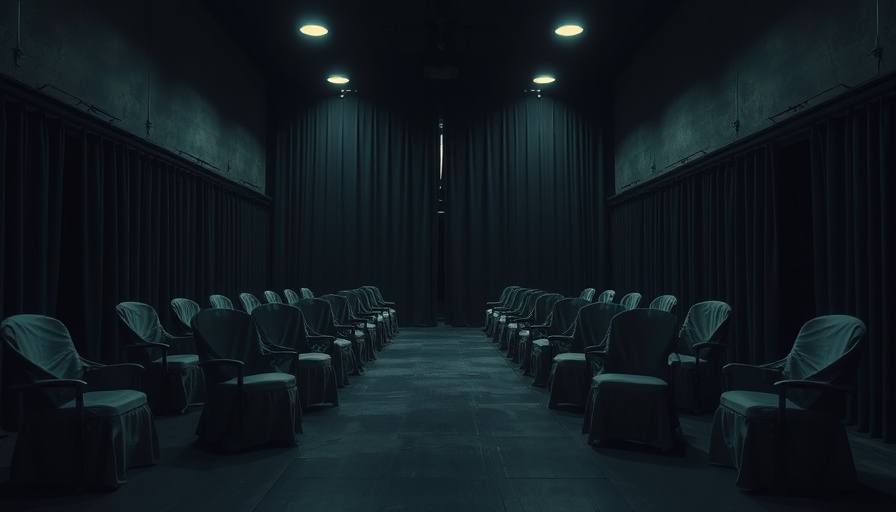
A Grim Milestone: The Return of Firing Squads in America
As of Friday evening, a South Carolina man named Brad Sigmon is set to mark a sobering return to a capital punishment method long thought to be antiquated: execution by firing squad. This will not only be the first firing squad execution in South Carolina history but also the first in the United States in over 15 years. The landscape of the death penalty in America is evolving, and the choice of execution methods is increasingly contentious, raising ethical and moral questions concerning justice and humanity.
Who is Brad Sigmon?
Brad Keith Sigmon, 67 years old, was convicted for the brutal murder of his ex-girlfriend’s parents, David and Gladys Larke, in 2001. Sigmon’s crimes were horrific; he bludgeoned both victims with a baseball bat, delivering multiple crushing blows that resulted in their deaths. Afterward, he attempted to kidnap his ex-girlfriend Rebecca Armstrong but ended up shooting her as she attempted to escape. At his trial, Sigmon admitted to the crimes, expressing remorse, albeit with an unsettling acceptance of the death penalty as a possible outcome. “I hate what I did,” he stated, leaving little room for doubt regarding his guilt.
The Deliberate Decision for Firing Squad
In a significant twist, Sigmon opted for execution by firing squad over lethal injection or electrocution. His attorney, Gerald “Bo” King, expressed Sigmon’s belief that the risks associated with lethal injection—particularly the complications observed in recent executions—offered a far more terrifying fate than facing a firing squad. The choice underscores issues surrounding the transparency of lethal injection protocols in South Carolina, which have faced scrutiny due to reports of botched procedures. The prospect of being “cooked alive” in the electric chair was deemed unacceptable by Sigmon.
Community Response and Protests Against the Execution
The looming execution has sparked a wave of protests, driven by concerns regarding the death penalty in general and the method of execution in particular. Advocacy groups have mobilized under the banner of 'South Carolinians for Alternatives to the Death Penalty,' pushing for a reevaluation of Sigmon’s impending execution. Many members believe that the firing squad is an archaic, brutal form of punishment more suitable for wartime than civil society.
Key figures, including religious leaders and relatives of victims, have raised their voices in opposition to state-sanctioned executions, arguing that they achieve nothing positive for both the victims’ families and the community. "Everything about this barbaric, state-sanctioned atrocity is abjectly cruel," said King. This narrative finds resonance within individuals like Armstrong, who, while acknowledging her parents' murder, openly expresses her opposition to capital punishment altogether.
A Historical Context of Firing Squads in the U.S.
Execution by firing squad has been a rarely exercised method of capital punishment in the United States, with only three completed since the Supreme Court's ruling on the death penalty in 1976. Until now, all have taken place in Utah, making Sigmon's case an anomaly in a rapidly changing socio-political landscape. The U.S. has seen a shift, with states like Mississippi, South Carolina, and Idaho re-adding this method amidst growing complications with lethal injection drugs—a trend that some experts claim rattles the very foundation of mortality and justice in America.
Future Implications and Trends in Capital Punishment
As South Carolina prepares for its first firing squad execution, it inadvertently positions itself at the center of a heated debate regarding the future of capital punishment. Legal scholars posit that this reversal toward firing squads may open the door for critical conversations about the ethical implications of the death penalty.
Notably, this return may also influence public opinion on the broader spectrum of execution methods. Protestors argue that the gruesomeness and blatant visibility of firing squads can catalyze more stringent debates around humane treatment, justice reform, and the long-term implications of state-sanctioned executions.
Emotional Repercussions on Families
The emotional weight of this execution reverberates across both the victim’s families and the inmates’. As families prepare to witness this unsettling event, individuals close to both parties experience a myriad of emotions—from grief and anger to a longing for closure. For Armstrong, the daughter of the murder victims, the role of witnessing Sigmon’s execution is laden with personal pain and moral conflict. Some in her family opt to attend, believing that facing Sigmon will offer a sense of justice.
This reflects a broader trend that family members of both victims and perpetrators face ethical dilemmas surrounding their presence at such events, challenging the notion of justice as a straightforward concept.
Conclusion: A Call for Dialogue
The impending execution of Brad Sigmon by firing squad is a sobering reminder of the complexities surrounding capital punishment in America. As Central Florida residents and others consider the moral implications, it is imperative that society engages in thoughtful discourse about justice, ethics, and public safety.
Now more than ever, understanding the profound emotional and ethical ramifications of such measures can foster a more compassionate approach to these issues. We encourage residents and community stakeholders to reflect on these questions and engage in conversations about the future of our justice system and the values it upholds.
 Add Row
Add Row  Add
Add 






Write A Comment